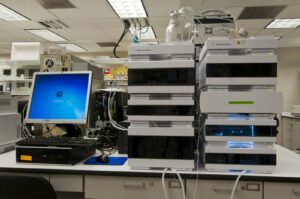The Role of Privacy Impact Assessments (PIAs) in Ensuring Compliance
Understanding the Need for Privacy Impact Assessments
Privacy Impact Assessments (PIAs) play a critical role in evaluating regulatory compliance within the rapidly evolving landscape of IoT data processing. As organizations in Saudi Arabia, UAE, and across the globe increasingly adopt IoT technologies, the importance of safeguarding user data cannot be overstated. Implementing a PIA helps businesses assess the potential privacy risks associated with IoT devices, ensuring that data collection, storage, and usage practices align with local and international regulations. With the rise of connected devices in cities like Riyadh and Dubai, the need for comprehensive PIAs has become more urgent, as they help mitigate risks and build trust with consumers.
A robust PIA framework serves as a proactive measure, identifying privacy issues before they become full-fledged problems. This process is essential in regions like the Middle East, where digital transformation is rapidly advancing, and regulatory bodies are becoming more stringent. By conducting thorough PIAs, businesses can ensure compliance with regulations such as the General Data Protection Regulation (GDPR) or other local data protection laws, thereby avoiding hefty fines and reputational damage. Additionally, PIAs support organizations in implementing best practices for data security and privacy, which are crucial for maintaining a competitive edge in today’s market.
The PIA process not only protects the organization but also benefits consumers by ensuring that their personal information is handled with care. This is particularly important in IoT ecosystems, where data flows continuously between devices, potentially exposing sensitive information to unauthorized access. By identifying and addressing privacy risks early on, PIAs help build a foundation of trust, which is essential for the successful adoption of IoT technologies in any region.
Key Components of an Effective Privacy Impact Assessment
To maximize the effectiveness of a Privacy Impact Assessment, it is essential to understand the key components that contribute to a comprehensive evaluation. First and foremost, a PIA should begin with a clear understanding of the data being processed, including the types of personal information collected by IoT devices, the purposes of data collection, and how this data is stored and shared. This initial assessment provides a solid foundation for identifying potential privacy risks and determining the necessary safeguards.
Another critical component of a PIA is the assessment of data protection measures currently in place. This involves evaluating the security protocols and encryption methods used to protect data, as well as the policies governing data access and sharing. In cities like Riyadh and Dubai, where IoT adoption is on the rise, ensuring that these measures are robust and up-to-date is vital for compliance with local regulations and for maintaining consumer trust. Additionally, the assessment should consider the potential impact of data breaches or unauthorized access, and outline strategies for mitigating these risks.
Finally, a successful PIA must include a comprehensive risk management plan that outlines the steps to be taken in response to identified privacy risks. This plan should be tailored to the specific needs of the organization and the regulatory environment in which it operates. In the context of IoT, this could involve implementing additional layers of security, such as multi-factor authentication or regular security audits, to ensure ongoing compliance. By addressing these components, organizations can create a robust PIA that not only meets regulatory requirements but also enhances overall data security and privacy.
Best Practices for Implementing Privacy Impact Assessments in IoT Environments
Integrating PIAs into IoT Data Processing Workflows
Integrating Privacy Impact Assessments into IoT data processing workflows is crucial for ensuring that privacy and security considerations are not overlooked. In dynamic markets like Saudi Arabia and the UAE, where IoT technology is rapidly expanding, incorporating PIAs from the outset of any IoT project can significantly reduce the likelihood of non-compliance. By embedding PIA processes into the design and development phases, organizations can identify and address potential privacy concerns before they escalate, ensuring a smoother path to regulatory compliance.
One effective approach to integrating PIAs into IoT workflows is to establish a cross-functional team that includes representatives from legal, IT, and operational departments. This team can work collaboratively to ensure that privacy considerations are embedded in every aspect of IoT development, from the initial concept to deployment and beyond. In cities like Riyadh and Dubai, where digital transformation is a priority, such cross-functional collaboration is essential for navigating the complex regulatory landscape and ensuring that IoT initiatives are both innovative and compliant.
Additionally, organizations should consider adopting automated tools that streamline the PIA process. These tools can help identify potential privacy risks in real-time, allowing for more agile responses to emerging threats. By integrating these tools into IoT workflows, businesses can ensure that privacy impact assessments are conducted consistently and efficiently, reducing the administrative burden while maintaining high standards of data protection.
Ensuring Continuous Compliance Through Regular PIAs
Conducting a single Privacy Impact Assessment at the outset of an IoT project is not enough to guarantee ongoing compliance. As IoT systems evolve and new devices are added, the privacy risks associated with data processing can change, necessitating regular PIAs to ensure continuous compliance. For organizations operating in regions like Saudi Arabia and the UAE, where regulatory environments can be particularly stringent, conducting regular PIAs is crucial for staying ahead of potential issues and maintaining consumer trust.
To ensure continuous compliance, organizations should establish a schedule for regular PIAs, aligning these assessments with key milestones in the IoT project lifecycle. This could include conducting PIAs before the launch of new IoT devices, after significant software updates, or in response to changes in data protection regulations. By making PIAs an integral part of the IoT project lifecycle, organizations can proactively address privacy concerns and adapt to the evolving regulatory landscape.
Furthermore, it is essential to document the findings of each PIA and use this information to inform future assessments. This documentation can provide valuable insights into recurring privacy issues and help organizations refine their data protection strategies over time. In rapidly developing markets like Riyadh and Dubai, where IoT adoption is accelerating, leveraging the lessons learned from previous PIAs can be instrumental in achieving long-term success and compliance.
The Strategic Value of PIAs in IoT Data Processing
Privacy Impact Assessments offer significant strategic value beyond mere regulatory compliance. For organizations in the UAE, Saudi Arabia, and other tech-driven markets, PIAs can serve as a competitive advantage by demonstrating a commitment to data privacy and security. In an era where consumers are increasingly concerned about how their data is used, organizations that proactively address privacy concerns through regular PIAs can differentiate themselves in the marketplace and build stronger relationships with customers.
Moreover, PIAs can help organizations identify opportunities for innovation within their IoT ecosystems. By closely examining data flows and privacy risks, businesses can discover new ways to enhance the functionality and security of their IoT devices. This could involve integrating advanced technologies such as blockchain or AI-driven analytics to improve data protection and operational efficiency. For example, a company in Riyadh or Dubai might leverage PIAs to develop cutting-edge IoT solutions that not only comply with regulations but also set new standards for privacy and security in the region.
In conclusion, Privacy Impact Assessments are not just a regulatory requirement; they are a vital tool for ensuring the success and sustainability of IoT initiatives. By adopting best practices for PIAs and integrating them into IoT workflows, organizations can safeguard user data, comply with local and international regulations, and unlock new opportunities for innovation. As IoT continues to reshape industries across the globe, the importance of robust PIAs will only grow, making them an essential component of any forward-thinking business strategy.
#IoT #PrivacyImpactAssessment #DataProcessing #RegulatoryCompliance #DataSecurity #Riyadh #Dubai #SaudiArabia #UAE













